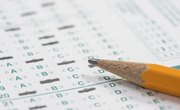Questionnaire validation is a process in which the creators review the questionnaire to determine whether the questionnaire measures what it was designed to measure. If a questionnaire's validation succeeds, the creators label the questionnaire as a valid questionnaire. This validity comes in different forms, all relying on the method used for the validation procedure. Depending on the specific situation for the questionnaire, the creators may choose to use one or many of the various validation methods.
Content Validation
Content validation refers to observing all the specific items on the questionnaire to determine whether the questionnaire addresses the topic overall. This type of validation is often the most important validation in developing new questionnaires. Typically, the researchers create a list of all that the questionnaire is meant to measure and check the items on the questionnaire against this list. This allows the researchers to ensure that every item corresponds to a desired measurement and that everything that should be measured is actually measured.
Predictive Validation
This form of validation ensures the accuracy of the questionnaire by detecting whether subjects' answers on the questionnaire can predict certain aspects or behaviors of the subjects. For example, if the questionnaire attempts to evaluate potential students for a prestigious school, the answers on the questionnaire that are "desirable" should be those of successful students. Researchers can confirm predictive validation through assessing past or present students with the questionnaire and looking for correlations between performance and questionnaire responses.
Concurrent Validation
Researchers tend to use concurrent validation for a questionnaire when there are other questionnaires or similar measures that investigate the same aspect of interest as the questionnaire in development. If the creators find that questionnaire's responses correlate with another measurement, then they can confirm concurrent validity. One example of a use of concurrent validation of a questionnaire for potential students is to see whether the responses on a questionnaire for a group of students are relate to those students' previous test scores.
Face Validation
Face validation may well be the simplest form of validation. For this method of validation, no quantitative methods are needed. Researchers employing face validation on their questionnaire need only look at the questionnaire as a whole and its individual items and ask themselves, "Does this measure what it should?" Face validation in a sense is a form of common sense applied to a questionnaire's purpose. The main difference between face validation and content validation is that any individual can use face validation to validate a questionnaire, whereas content validation is performed by experts.
Related Articles
References
- "Developing a Questionnaire"; Bill Gillham; 2007
- "Questionnaire Design: How to Plan, Structure and Write Survey Material for Effective Market Research"; Ian Brace; 2004
Writer Bio
Having obtained a Master of Science in psychology in East Asia, Damon Verial has been applying his knowledge to related topics since 2010. Having written professionally since 2001, he has been featured in financial publications such as SafeHaven and the McMillian Portfolio. He also runs a financial newsletter at Stock Barometer.











